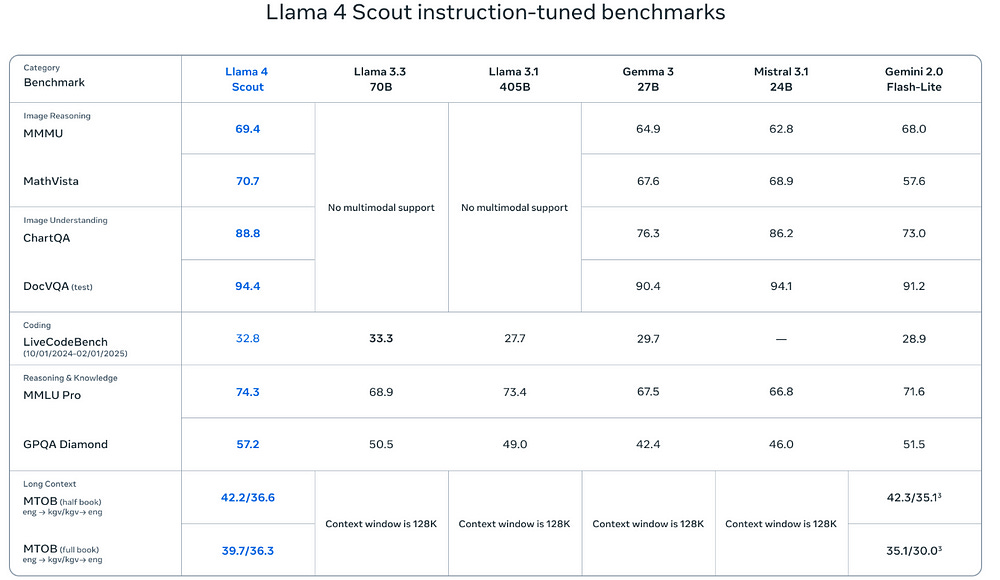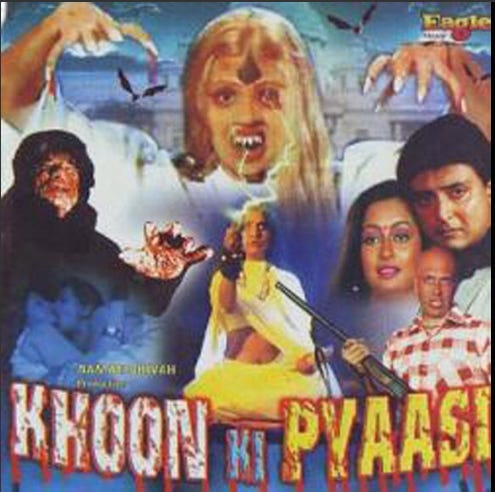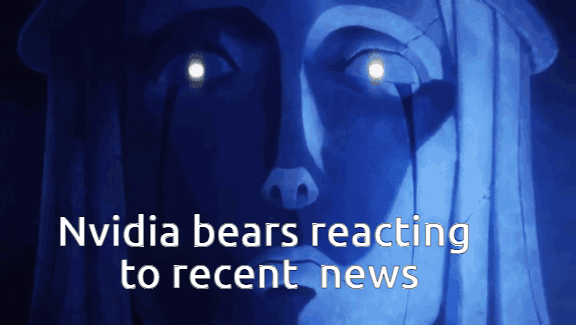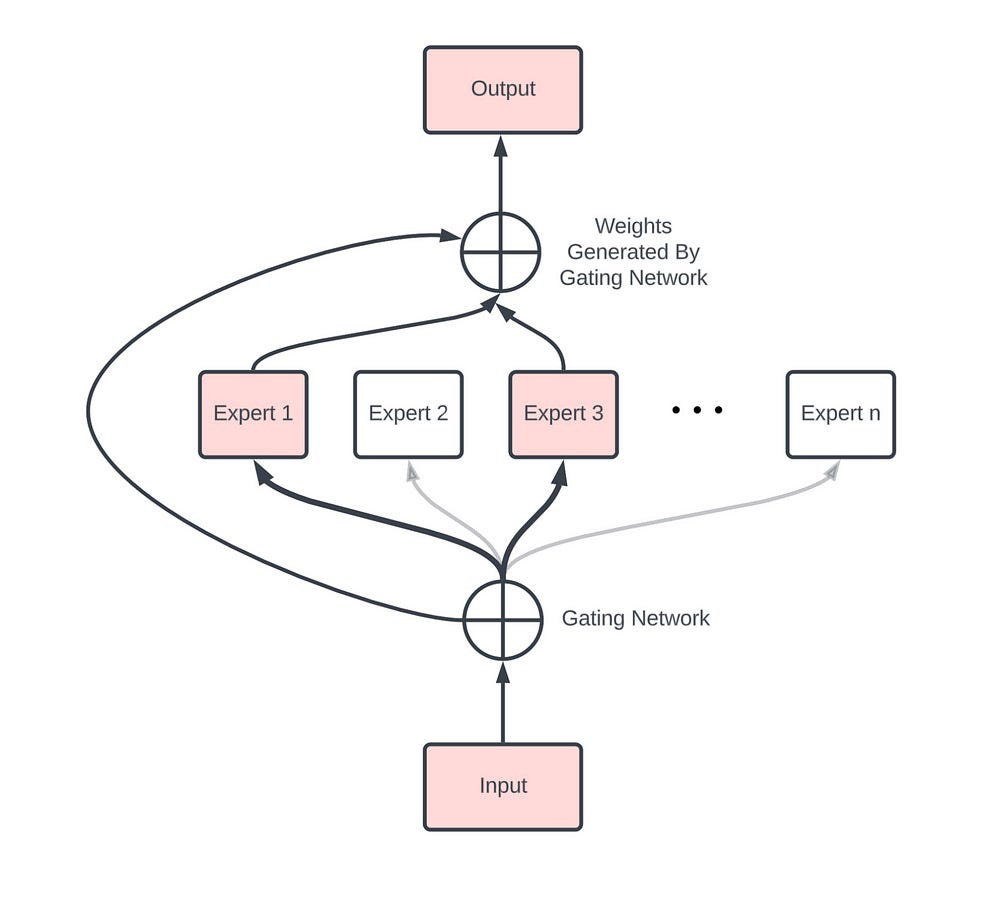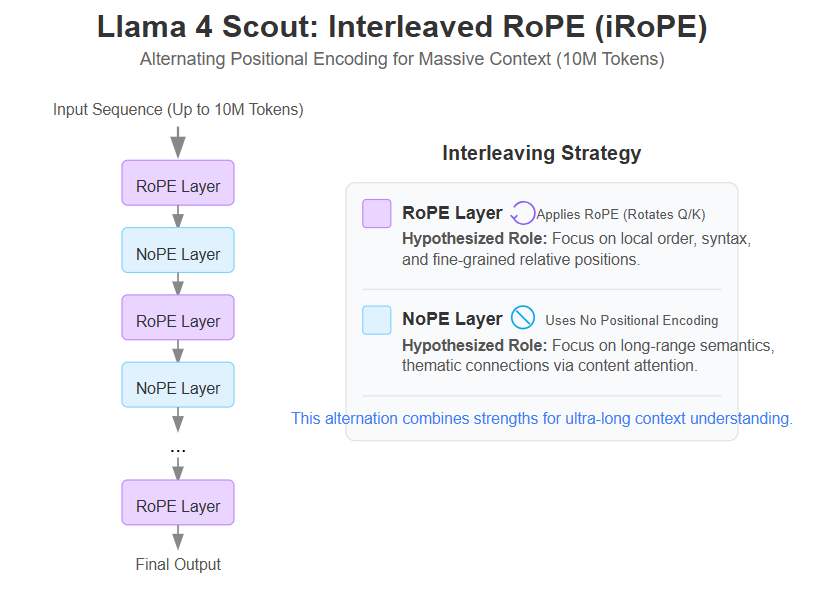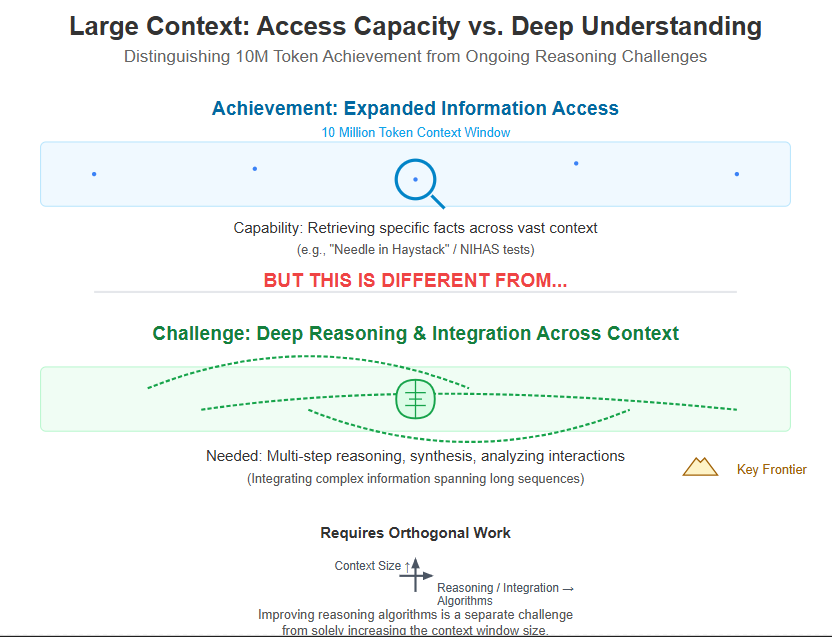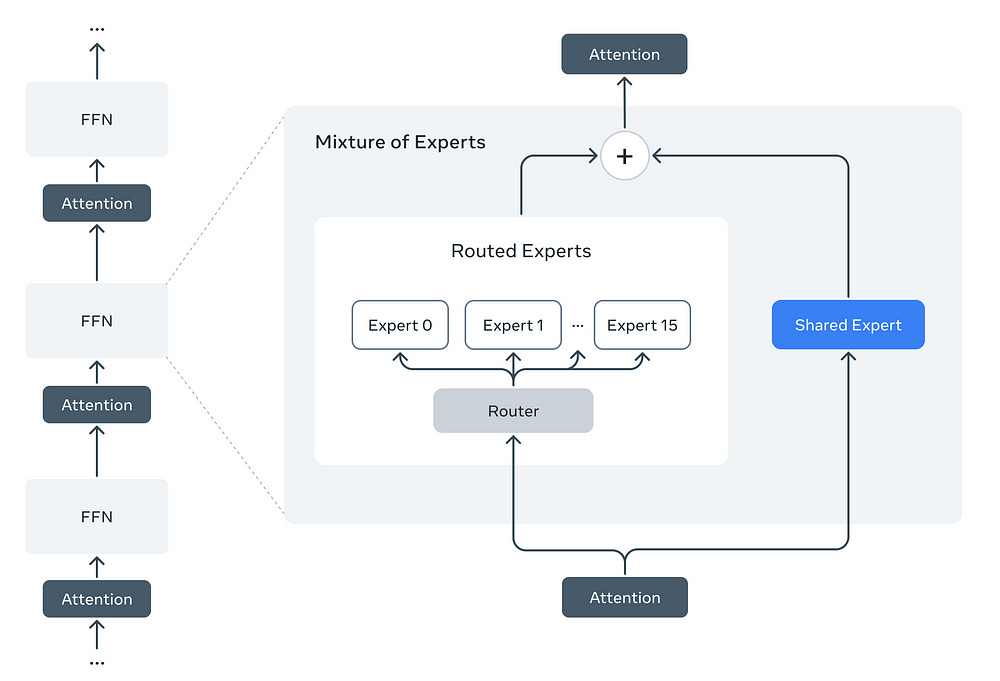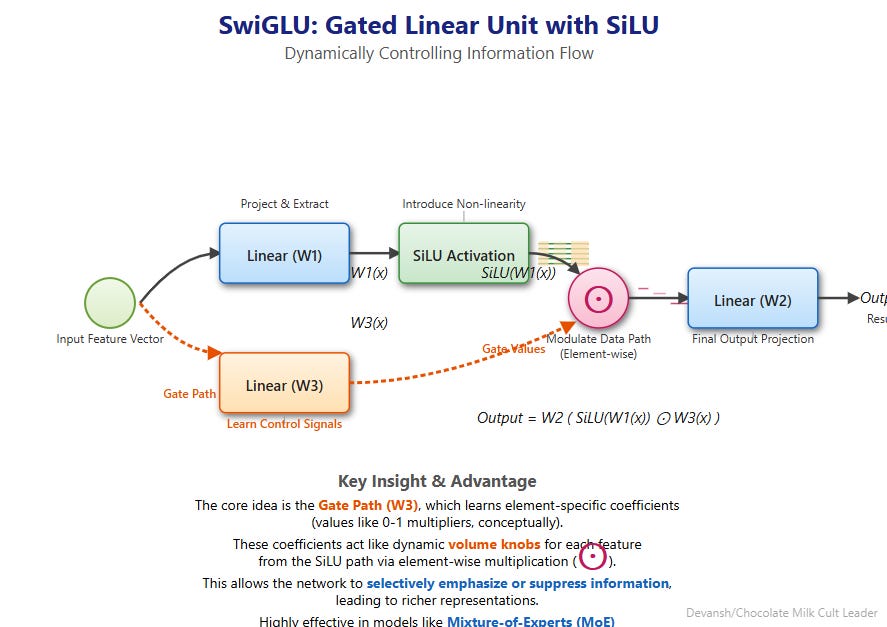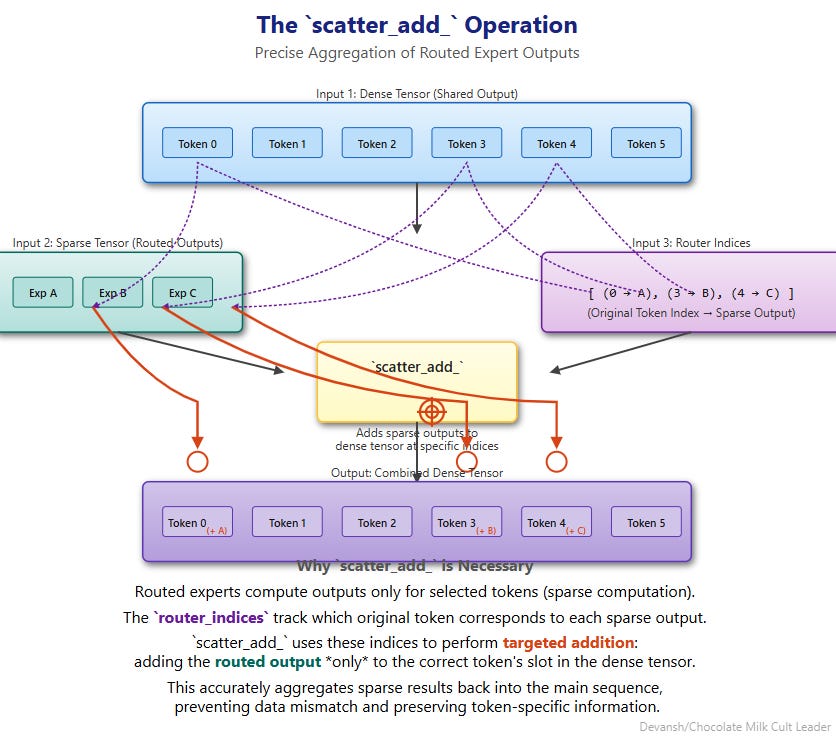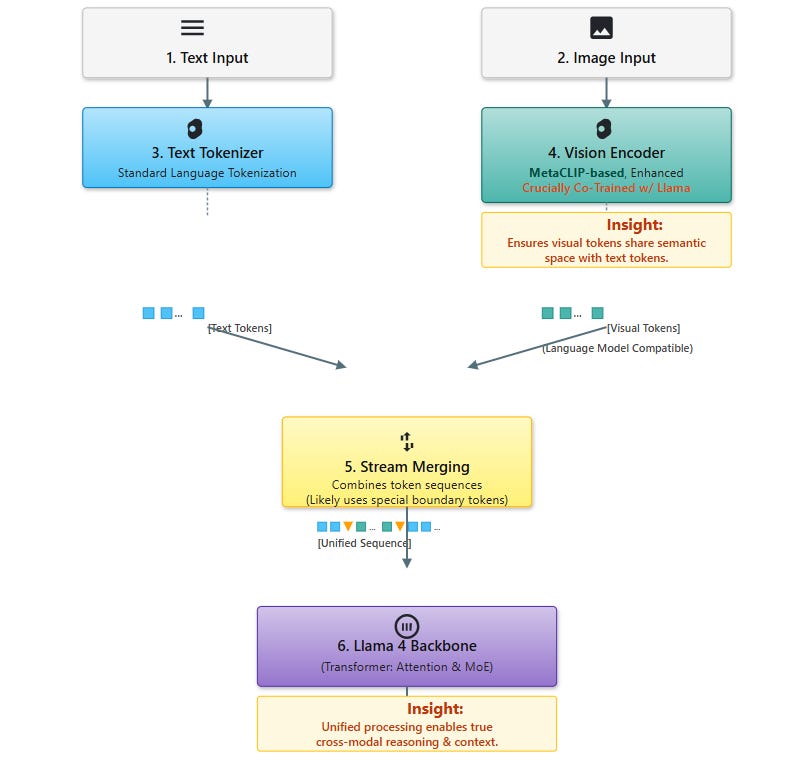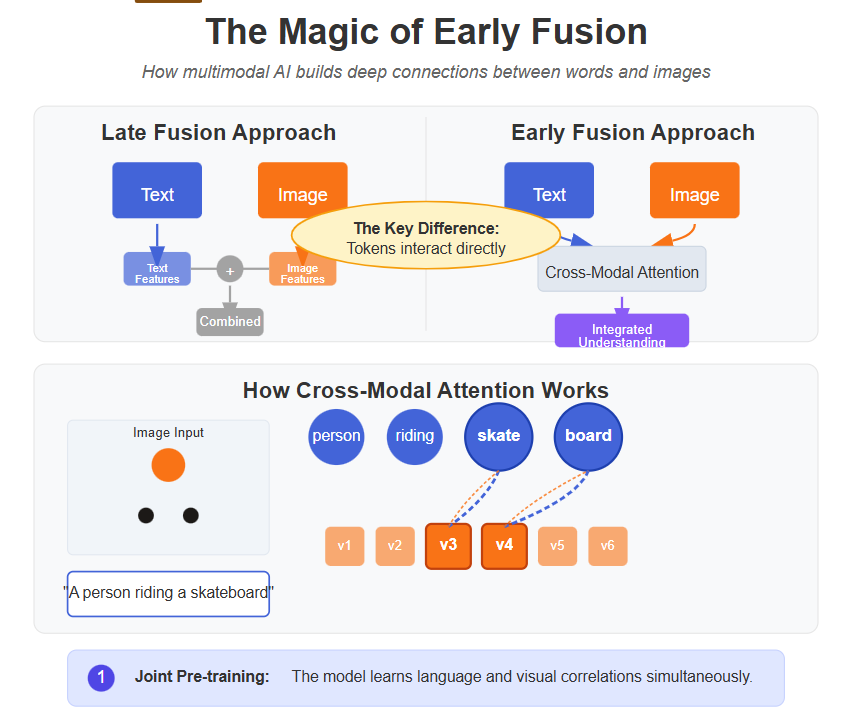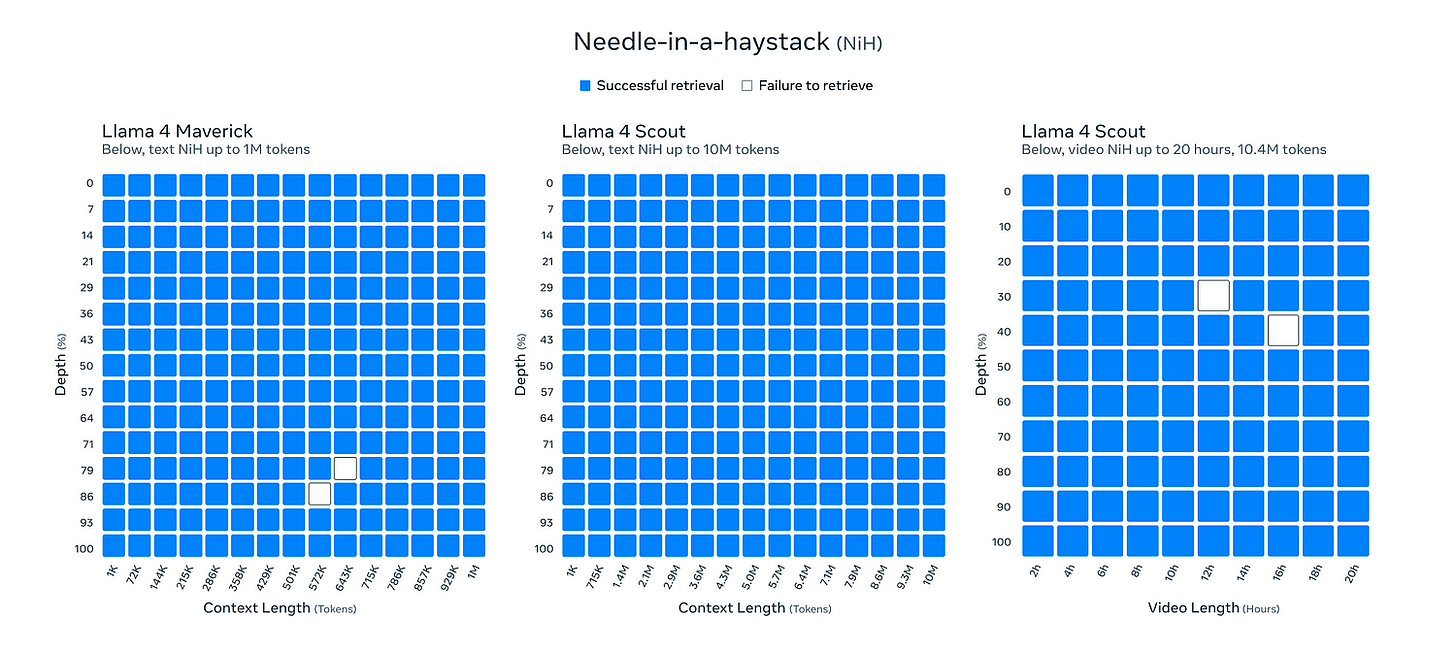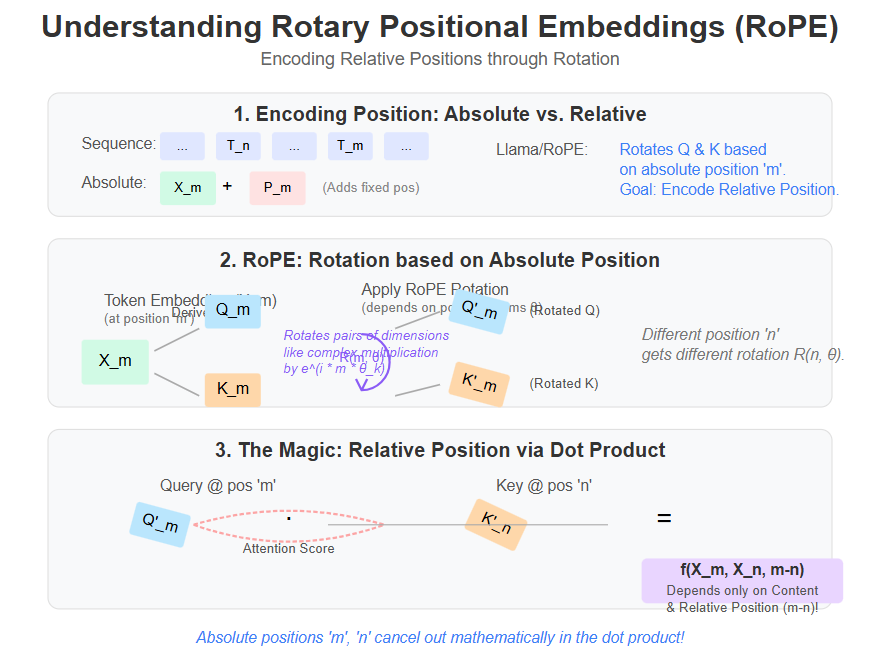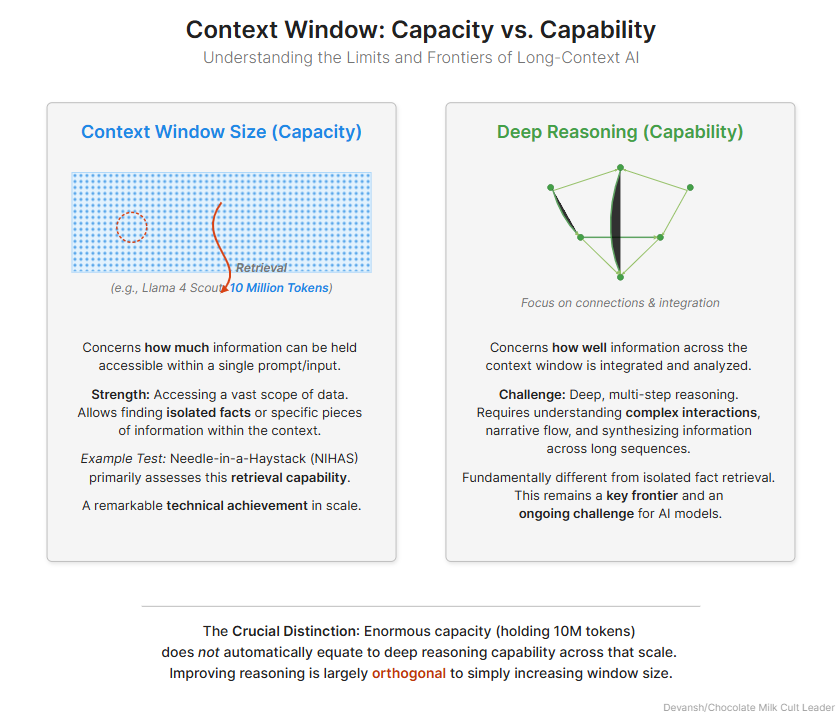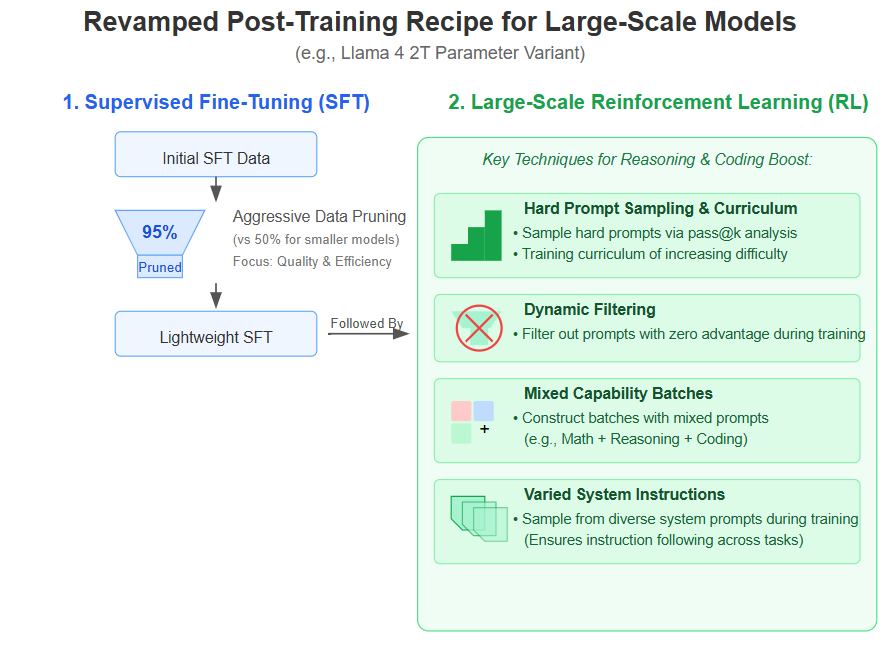Llama 4 Deep Dive: Why Meta's Latest Models Change Everything [Breakdowns]
Hey, it’s Devansh 👋👋
In my series Breakdowns, I go through complicated literature on Machine Learning to extract the most valuable insights. Expect concise, jargon-free, but still useful analysis aimed at helping you understand the intricacies of Cutting-Edge AI Research and the applications of Deep Learning at the highest level.
I put a lot of effort into creating work that is informative, useful, and independent from undue influence. If you’d like to support my writing, please consider becoming a paid subscriber to this newsletter. Doing so helps me put more effort into writing/research, reach more people, and supports my crippling chocolate milk addiction. Help me democratize the most important ideas in AI Research and Engineering to over 100K readers weekly.
I’ll skip the customary intros- Meta just dropped Llama 4- with 3 very powerful model variants-
3. Behemoth- A 2 Trillion model that is being called best in class, but is not released yet b/c it’s still mid-training. This is used as the teacher model for the lighter ones. We’re able to access the preview model for a peek at the future capabilities.
There goes my Saturday plan of playing 5–7 hours of age of empires and watching some Psycho Pass (such an elite show, ong). Thank you, Zucky Chan. B/w this release 2.5 Pro, all the Chinese models, rumors of two extremely powerful models -“Nightwhisper” and Alpha Qasar, very cool breakthroughts in reasoning, and more I can’t imagine AI researchers having too much of a break over the next few months. This is how I view the entire industry right now-
In this article, I’m going to go over the release statement and the code base to analyze the most important insights to understand how they do it so that you don’t have to. The goal isn’t so much to summarize the release as it is to read b/w the lines and try to understand what this teaches us about the trends in building the next generation of systems.
Llama 4 Maverick, a 17 billion active parameter model with 128 experts, is the best multimodal model in its class, beating GPT-4o and Gemini 2.0 Flash across a broad range of widely reported benchmarks,
Given the extreme efficiency of both released variants on Llama 4, I feel it is only right to crack open our recent meme from this breakdown-
If you want to dig into what makes Llama 4 special, keep reading.
Llama 4 has 4 notable developments-
MoEs are networks composed of “expert” sub-networks and a “gating” network that dynamically routes inputs to the appropriate experts. This allows for conditional computation, making large networks more efficient-
Their power and efficiency are why everyone expects cutting-edge LLMs like GPT 4 and Gemini, and their future versions to heavily leverage this technology.
Meta replaces some dense FFN layers with multiple smaller “expert” FFNs (using high-performance SwiGLU activation) and a router. Maverick, in particular, uses a unique hybrid “shared + routed” expert approach. We’ll break this down in the main section.
This is one of the biggest changes confirming MoE supremacy for modern Deep Learning (and making our coverage of DeepEP in the AI Market Research of March that much more important). AFAIK, Llama was the only major LLM not using MoE in its setup (which was surprising).
NM provides deeper integration than “bolted-on” vision leads to better cross-modal understanding and grounding.
An enhanced MetaCLIP-based vision encoder (specifically trained with Llama) generates visual tokens that are processed jointly with text tokens within the same Transformer backbone, enabling direct cross-modal attention. Relies on joint pre-training on massive text/image/video datasets.
Scout uses , interleaving standard RoPE attention layers with NoPE (No Positional Encoding) layers. Complemented by “inference time temperature scaling” (dynamic attention sharpening based on position) and training on long sequences (256K).
The long context is cool, but Needle in a Haystack (the way we measure performance in Long Context tasks) isn’t a great benchmark for professional use. Most long context usage isn’t so much picking specific bits of information but rather the ability to merge multiple snippets of information and reason/draw links between them w/o losing the plot. This is a very different challenge and still needs a lot of work to be solved.
A good illustration of this is Gemini’s video capabilities. Here is a relatively chill sparring session that’s about 2 Minutes long (well under Gemini context window limits). It’s pretty slow-paced, it’s only striking (which is easier to decipher than grappling), and the techniques aren’t out of the norm. This should make analysis very easy- given Gemini’s amazing performance in Long Context video search. However, Gemini consistently fails to analyze this, creating weird hallucinations, missing moments, and generally tripping out on the video. For the analysis actual task- the model is at best functionally useless and at worse harmful.
It’s not that Gemini can’t understand what it’s looking at. When explicitly prompted about moments (or corrected about incorrect statements), it can course correct based on feedback. However, it fails to create a cohesive analysis that requires combining multiple moments b/c it can’t effectively figure out how to read the context and chain them together. This indicates an important distinction between needle in a haystack vs long context analysis. Increasing the context window doesn’t solve the integration issue.
Therefore, while Llama 4 Scout's 10 million token context window is a remarkable technical achievement that significantly expands the potential scope of information a model can access in one go, it's crucial to distinguish this capacity from the ability to perform deep, multi-step reasoning or synthesis across that entire context. Successfully retrieving isolated facts (the strength tested by NIHAS) is fundamentally different from integrating and analyzing complex interactions or narratives spanning long sequences. Mastering this deeper form of long-context understanding and integration, beyond simple retrieval, remains a key frontier and an ongoing challenge for the next generation of AI models and will require work that is orthogonal to the increasing max context window that our models can process.
This stage creates a better balance between reasoning/coding capabilities and conversational alignment compared to heavier SFT approaches.
Llama also proactively embraces quantization (FP8, INT4) using optimized libraries like FBGEMM, making high-performance inference feasible.
In the deep dive, we will touch thes following points-
PS- I wrote this breakdown jacked to the tits on decaf coffee (gifted by one of the cultists, thank you Chengpei you absolute gigachad) and my rage at having to run evals on all these new LLMs/Techniques while house-hunting in NYC (my lease expires April 30th, please help me find an apartment, I will worship you). If you think I got something wrong, missed something, or have other comments- don’t hesitate to share/reach out.
I put a lot of work into writing this newsletter. To do so, I rely on you for support. If a few more people choose to become paid subscribers, the Chocolate Milk Cult can continue to provide high-quality and accessible education and opportunities to anyone who needs it. If you think this mission is worth contributing to, please consider a premium subscription. You can do so for less than the cost of a Netflix Subscription (pay what you want here).
I provide various consulting and advisory services. If you‘d like to explore how we can work together, reach out to me through any of my socials over here or reply to this email.
Our new Llama 4 models are our first models that use a mixture of experts (MoE) architecture. In MoE models, a single token activates only a fraction of the total parameters. MoE architectures are more compute efficient for training and inference and, given a fixed training FLOPs budget, delivers higher quality compared to a dense model…
As an example, Llama 4 Maverick models have 17B active parameters and 400B total parameters. We use alternating dense and mixture-of-experts (MoE) layers for inference efficiency. MoE layers use 128 routed experts and a shared expert. Each token is sent to the shared expert and also to one of the 128 routed experts. As a result, while all parameters are stored in memory, only a subset of the total parameters are activated while serving these models. This improves inference efficiency by lowering model serving costs and latency — Llama 4 Maverick can be run on a single NVIDIA H100 DGX host for easy deployment, or with distributed inference for maximum efficiency.
Traditional Deep Learning models are “dense.” When processing information, every single piece of input data flows through every single parameter of the model in each layer. This works well when we’re dealing with peanut models, but as models get bigger to learn more knowledge (like Llama 4 Behemoth with ~2 trillion parameters!), processing every input through every parameter becomes incredibly computationally expensive.
MoE offers a smarter, alternative. Instead of one massive processing unit (like the Feed-Forward Network or FFN in a standard Transformer layer).
Typically, an MoE layer has:
The routing mechanism (which experts are selected) and how their outputs are combined have some interesting implications. For example, you might choose (where the router makes discrete choices, sending each token to one or a few specific experts) or (where experts might be activated partially or their outputs blended based on learned weights). There’s a whole discussion around this that is worth studying for MoE, but we won’t touch upon that here. I’m simply flagging it since understanding these routing strategies is important further reading for anyone more serious about implementing MoE architectures.
Whatever you pick, MoEs end up with the same result. The model can have a vast total number of parameters (its “potential knowledge” stored across all experts), but for any given input, only a small fraction is actively used. This drastically reduces the computation needed for inference (running the model), making huge models practical.
MoEs also tend to work well with Distillation and Compression, which is a big positive for efficient training and inference. A huge consideration for a company looking to deploy GenAI for billions of users across perhaps trillions of interactions.
With this introduction, let’s do a look at Llama 4’s special way of inference-
MoE layers aren’t used everywhere. They replace the standard FFN block in some layers, likely alternating with dense FFN layers. This mix probably helps balance performance and stability.
Each expert isn’t just a basic network; it uses the sophisticated (Sigmoid-Weighted Linear Unit) activation function, carried over from previous Llama models.
The Maverick model uses a Hybrid Expert model. This is a key detail that is worth talking about
This is a zoomed in version of the earlier illustration to focus on this approach
I can’t remember seeing an explanation for this, but I can speculate. This design seems to be a way to bring in “cross-domain collaboration” (from the shared expert, which is likely going to link ideas across areas) while also getting specialized processing from the best-suited routed expert.
How do you merge the output from the shared expert (which processed all tokens) and the routed expert (which only processed some tokens at specific original positions)? Simple addition won’t work correctly. This is where the scatter_add comes in. An overview of the process is given below-
To get more detailed, here’s how it works-

shared_expert and stored in out_aD. Separately, the outputs for the sparsely activated routed experts are calculated (routed_out_egg_D). The key operation is scatter_add_, which precisely adds the routed expert outputs back into the out_aD tensor. This uses router_indices (reshaped into router_indices_EG_D) to map each routed expert output back to its original token's position, ensuring correct aggregation. Finally, the result is potentially reduced across model parallel groups before being returned in the expected sequence shape.This approach aggregates the sparse computations back into the dense sequence representation without mixing up outputs for different tokens.
I would imagine all of this was much more difficult to track and load-balance effectively, but the results seem to justify the effort. Meta had to really deliver big after Mistral, DeepSeek, and Qwen models had thrown down the gauntlet, especially as Q1 is coming to an end. And they really delivered
Let’s move on to the next section. Another huge hint for the future of AI systems.
Multimodality might not turn too many heads anymore, since everyone is transitioning to it. However, what makes L4’s variant important to study is how it’s done: Llama 4 is . Let’s take a second to understand this and the implications it has.
Historically, adding vision to powerful language models often involved a “bolted-on” approach. You might take an excellent text AI and pair it with a separate image-understanding AI. The image model would analyze a picture and pass a summary or numerical representation (an embedding) to the text model. The text model, in turn, would reason based only on that second-hand report, never having truly “seen” the image itself. This approach is still common with Audio and Video, since the embedding models for these two modalities aren’t as well established yet.
While functional, this approach is a lot like following a sport by reading after-match reports on OneFootball and watching the YouTubers- details always get lost in translation. Stats and analysis might show you that Manchester United is a generational shitshow, but it is only when you watch them play that you can appreciate just how masterfully they’ve turned self-sabotage into an art form.
As a slight, but very tangent, now that Antony, our Messiah, has started to hit some fiendish numbers, we must ask a very important question-
I look forward to hearing your responses.
Back to AI things. Let’s understand Native MultiModality. FYI, this is the same principle used by Gemini, which is what enabled them to become more multimodal than anyone else. Other LLMs (such as 4o) copied this once they saw how elite Gemini’s multi-modality was. So it’s very important to study it.
Llama 4 models are designed with native multimodality, incorporating early fusion to seamlessly integrate text and vision tokens into a unified model backbone. Early fusion is a major step forward, since it enables us to jointly pre-train the model with large amounts of unlabeled text, image, and video data. We also improved the vision encoder in Llama 4. This is based on MetaCLIP but trained separately in conjunction with a frozen Llama model to better adapt the encoder to the LLM.
Its ability to process images isn’t an add-on; it’s woven into the core fabric of the model’s architecture right from the start. This “native” approach is achieved through a technique called .
Here’s how it works:
Enabling this requires a true heavyweight, a technique that will feed families for generations to come.
We trained both of our models on a wide variety of image and video frame stills in order to give them broad visual understanding, including of temporal activities and related images. This enables effortless interaction on multi-image inputs alongside text prompts for visual reasoning and understanding tasks. The models were pre-trained on up to 48 images, and we’ve tested in post-training with good results up to eight images.
-The use of video frame stills probably captures “dynamic” pictures as opposed to stills, which will expand the range of multi-modality.
The magic of early fusion happens within the attention mechanism. Because text and visual tokens are processed side-by-side, the model can learn direct relationships between them. The word “skateboard” in a prompt can directly “attend” to the visual tokens representing the skateboard in the image. Conversely, a striking visual feature can influence how the model interprets the accompanying text. This allows for a much deeper level of grounding and reasoning than possible with separate models.
This integrated architecture is powered by Llama 4’s . It learned language and vision correlations from the ground up, trained on an enormous dataset (part of the 30 trillion+ token mix) containing vast amounts of text and images (and even video). It wasn’t taught text first and vision later; it learned to connect pixels and words simultaneously.
All in all this follows the same theme as the MoE section. We’re going with harder techniques to really maximize performance. I think Llama 4 is as much an engineering accomplishment as it is a research one, maybe even more so.
Next, the section that’s probably catching the most attention-
If you’re reading my work, you likely don’t need the basics on what Context Windows are or why they’re important. So let’s skip the preludes and get into how Meta gets the long context performance down. To begin with
Handling long sequences in standard Transformer models presents significant hurdles:
Dealing with these problems and scaling Long Context has been the purview of one very special technique-
To understand Llama 4’s breakthrough, we first need to grasp how models like Llama typically handle position. Instead of just adding a fixed number representing position to each token’s embedding (absolute encoding), Llama models (since the first generation) use .
This is what sets the base for Scout’s breakthrough.
While standard RoPE is effective, reaching 10 million tokens required something special. Meta introduces as the core technology behind Scout’s massive context window.
Instead of applying RoPE consistently in every layer’s attention mechanism, iRoPE alternates layers:
Why mix RoPE and NoPE layers? Meta hasn’t published the details, but a lack of knowledge has never stopped me from baselessly speculating with confidence:
Interleaving allows the model to leverage both precise local ordering (via RoPE) and broad semantic aggregation (via NoPE), potentially creating a more robust and efficient representation for ultra-long sequences.
Do I have any grounds for saying this? Not really. But remember kids, never let silly things like scientific humility and “the truth” stand in the way of the truly important things like pretending to be smart to get some extra brownie points. If there is one piece of advice I would give to anyone for success, this would be it.
While iRoPE is cool, every Bakugo needs a Kirishima to become the best sparkly boi he can be. Let’s note some important side characters to long context-
Achieving 10 million tokens isn’t just about iRoPE; it’s a team effort:
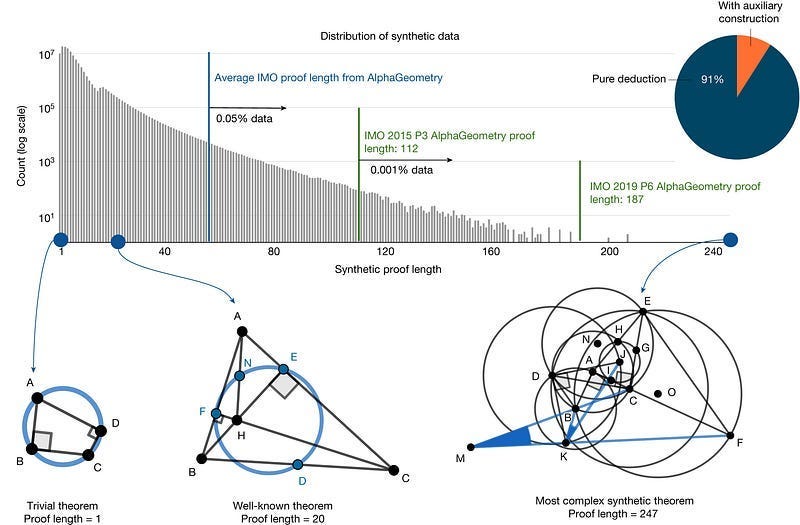
This has a lot of people hyped. Some even forecast the death of RAG and other related techniques.
While groundbreaking, using a 10M token context isn’t trivial. The memory requirements for the KV cache remain significant, and inference time naturally increases with input length. Additionally, long context scaling also has other struggles- transparency, testing, making meaningful improvements, etc, which significantly hold back potential in deployment. This will undeniably open a lot of doors, but it’s worth remembering that one-shot generation, no matter how powerful the model, has been much weaker than multi-generations for a reason. We’ll cover this in more detail in a separate article.
Don’t let this diminish the capability, though. This is undeniably a great accomplishment, and I can’t wait to see improvements on this.
Moving on, let’s cover the post-training (the training is mostly straightforward).
Post-training a model with two trillion parameters was a significant challenge too that required us to completely overhaul and revamp the recipe, starting from the scale of data. In order to maximize performance, we had to prune 95% of the SFT data, as opposed to 50% for smaller models, to achieve the necessary focus on quality and efficiency. We also found that doing lightweight SFT followed by large-scale reinforcement learning (RL) produced even more significant improvements in reasoning and coding abilities of the model. Our RL recipe focused on sampling hard prompts by doing pass@k analysis with the policy model and crafting a training curriculum of increasing prompt hardness. We also found that dynamically filtering out prompts with zero advantage during training and constructing training batches with mixed prompts from multiple capabilities were instrumental in providing a performance boost on math, reasoning, and coding. Finally, sampling from a variety of system instructions was crucial in ensuring that the model retained its instruction following ability for reasoning and coding and was able to perform well across a variety of tasks.
Pre-training imbues Large Language Models with vast knowledge, but it’s the phase that transforms this raw potential into helpful, safe, and aligned AI assistants. For the Llama 4 family, Meta didn’t just scale up pre-training; they significantly revamped their post-training pipeline, deploying advanced techniques to sharpen reasoning, enhance conversational ability, and ensure responsible behavior, particularly for complex models like the multi-trillion parameter Llama 4 Behemoth.
To counteract this, Llama 4 employs a refined three-stage pipeline:
The initial instruction-following stage uses a highly pruned dataset. By removing 50% (for Maverick) to 95% (for Behemoth) of “easy” examples (identified using model-based judges), Meta ensures SFT focuses only on challenging, high-signal data. This preserves the model’s core reasoning capabilities, preventing over-fitting to simple conversational patterns before the more exploratory RL phase. If you paid attention, this was an approach that Meta has been echoing for a few years-
This is the core refinement stage. Llama 4’s RL focuses intensely on improving performance on hard prompts, identified using methods like pass@k analysis across coding, math, and reasoning tasks. Key innovations include:

Mixed-Capability Batches: Training batches blend prompts targeting diverse skills to ensure balanced development across coding, reasoning, and conversation.
Diverse Instructions: Using varied system prompts maintains the model’s fundamental instruction-following flexibility.
Lightweight Direct Preference Optimization (DPO): Applied last, DPO provides a final polish. It’s used sparingly, likely to address specific stylistic preferences, response formatting, or safety-related corner cases without constraining the complex abilities developed during RL.
Applying this advanced RL strategy to the massive Llama 4 Behemoth necessitated significant infrastructure innovation. Meta developed a fully asynchronous online RL training framework. This system decouples components like the policy and reward models, allowing flexible allocation across GPU resources based on computational demand, moving beyond traditional synchronous distributed training limits. Combined with optimized parallelization for MoE architectures, this yielded an impressive ~10x improvement in training efficiency, making sophisticated RL feasible at the frontier scale.
Unlike the previous Llama releases, which I personally felt were important but profoundly uninspiring (which is why we never covered them), Llama 4 is a fresh model that really pushes the boundaries of LLMs forward. Zucky Chan and the rest of the Meta crew have really channeled their inner Bald Eagles to snatch back the Open Source crown from the Europeans and Chinese. A feat of great historical importance. I’m going to get a cheeseburger to celebrate.
Your move, Commies.
Thank you for being here and I hope you have a wonderful day,
Stay classy, unlike United’s back four.
Dev <3
If you liked this article and wish to share it, please refer to the following guidelines.
That is it for this piece. I appreciate your time. As always, if you’re interested in working with me or checking out my other work, my links will be at the end of this email/post. And if you found value in this write-up, I would appreciate you sharing it with more people. It is word-of-mouth referrals like yours that help me grow. The best way to share testimonials is to share articles and tag me in your post so I can see/share it.
Use the links below to check out my other content, learn more about tutoring, reach out to me about projects, or just to say hi.
Small Snippets about Tech, AI and Machine Learning over here
AI Newsletter- https://artificialintelligencemadesimple.substack.com/
My grandma’s favorite Tech Newsletter- https://codinginterviewsmadesimple.substack.com/
My (imaginary) sister’s favorite MLOps Podcast-
Check out my other articles on Medium. : https://rb.gy/zn1aiu
My YouTube: https://rb.gy/88iwdd
Reach out to me on LinkedIn. Let’s connect: https://rb.gy/m5ok2y
My Instagram: https://rb.gy/gmvuy9
My Twitter: https://twitter.com/Machine01776819
